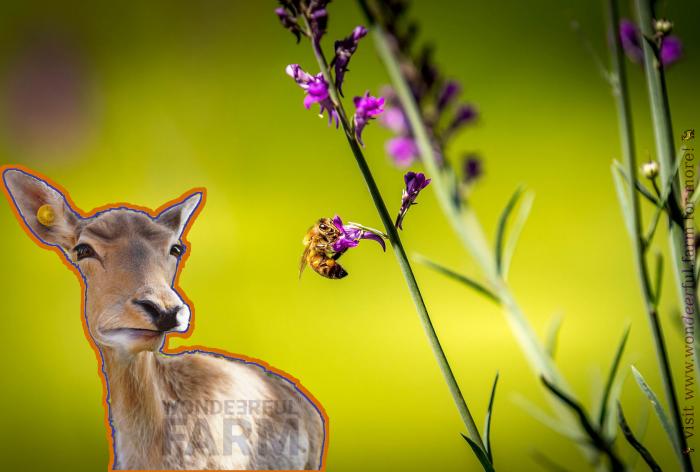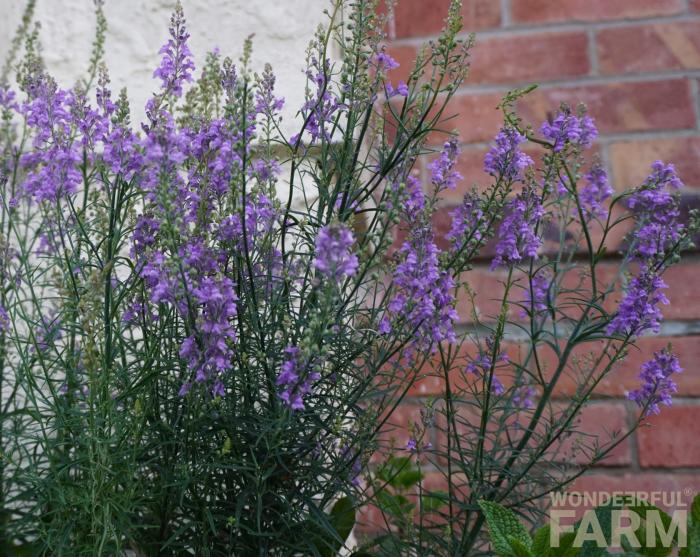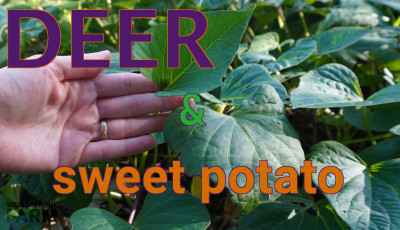Purple toadflax (Linaria purpurea) a deer proof plant?
» Deer stories » Deer resistant plants » Purple toadflax (Linaria purpurea) a deer proof plant?Plant type: perennials
Deer resistant: yes
Our plant hardiness zone:
New Zealand: subtropical
U.S. Zone 10b
Well, well, well... it looks like deer have finally shown some good taste! For some inexplicable reason, these animals just can't seem to get on board with purple toadflax. Maybe they don't like the slightly rough texture of the leaves, or maybe they just have better things to do than snack on this unappetizing plant.

Whatever the reason, one thing's for sure: if you're tired of deer munching on your garden plants, purple toadflax might just be the solution you've been looking for.
What kind of a plant is Purple Toadflax?
Purple toadflax (Linaria purpurea) is an herbaceous perennial flowering plant that can grow up to 91 cm tall. Linaria has lance-shaped leaves that are gray-green in color and grow up to 5 cm long. The delicate snapdragon-like violet flowers are borne on long, slender spikes and are purplish-blue in color with a yellow throat. The blooms usually appear from June to August.

Purple toadflax is sometimes grown as an ornamental plant in gardens. Thrives in full sun with dry to medium well-drained soil. It is hardly our favorite plant, but got its perks: it attracts heaps of bees and bumble bees into our garden, similarly to Borage, it's always humming with pollinators.
However, it is also considered an invasive species in some areas. Understandable, because it just pops up in nearly every new pot, even growing through cracks in concrete. But thankfully, very easy to pull out of the ground too.
Do deer eat Linaria Purpurea?
Purple Toadflax deer indeed won't touch. We have loads of it self-seeding and growing everywhere, and no matter how hard we tried to offer it to our deer they are utterly disgusted by this abomination.
Deer tend to avoid plants with hairy or fuzzy leaves, and the thin leaves of purple toadflax have a slightly rough texture. The stems are woody and appear almost hollow and dry inside. They have a bit of that lavenderish feel to them (deer hate lavender). However, this plant is not aromatic at all compared to lavender. It has a very faint pleasant scent.
Anyway, for whatever reason deer hate it, they never eat Purple Toadflax (Linaria purpurea) so it appears to be a deer proof plant.
Even with marigolds, that are commonly considered deer resistant, deer still might nibble on a few plants. They're not fans, but from time to time they will eat marigolds. Whereas this thing - never. Purple Toadflax just doesn't exist for them.
What are other varieties of Toadflax?
There are several different species of toadflax, some of which are commonly cultivated as ornamental plants. Here are a few examples:
- Yellow Toadflax (Linaria vulgaris): It has bright yellow flowers with long spurs and can grow up to 90 cm tall. Yellow toadflax is considered an invasive species in many areas and may be toxic to livestock according to some reports.
- Alpine Toadflax (Linaria alpina): Has small, delicate flowers that are usually blue or purple in color, and it typically grows to a height of around 20-30 cm.
- Dalmatian Toadflax (Linaria dalmatica): Has yellow flowers with orange throats and can grow up to 90 cm tall. Dalmatian toadflax is also considered an invasive species in many areas and may be toxic to livestock.
- Fairy Toadflax (Linaria maroccana): Is often grown as an annual ornamental plant in gardens. It has small, delicate flowers that are usually pink or purple in color, and it typically grows to a height of around 30-40 cm.
These are just a few examples of the many different species of toadflax that exist.
Medicinal use
Purple toadflax reportedly has been found to possess anti-fungal and anti-inflammatory properties, making it a valuable natural remedy for certain health conditions. For example, it is commonly recommended as a herbal wash for fungal infections such as athlete's foot or ringworm, as well as for skin eruptions and sores. Its anti-inflammatory properties also make it useful for alleviating painful conditions like piles.
In conclusion, purple toadflax appears to be a deer-resistant plant, and it can be a great addition to gardens in areas where deer are a problem. Furthermore, its easy-to-grow nature and tolerance for a variety of growing conditions make it an ideal choice for novice gardeners or those looking for a low-maintenance plant.
Published 25 February 2023
Add your comment
Plants alphabetically
More «Deer resistant plants» stories
Is Heuchera deer resistant? Do deer eat Coral Bells?
Testing Coral Bells AKA Heuchera the Fire Alarm variety for deer resistance. Do deer like to eat Heuchera's beutiful red foliage?
read more...
Planted Some Cosmos Near Deer...
Are Garden Cosmos plants deer resistant? We found out after bringing in this Mexican Aster flower home to meet our deer.
read more...
Do Deer Eat Sweet Potato Vine?
Sweet potato vine is a plant that belongs to the morning glory family, and it's a popular plant for both decorative and edible purposes. But have you ever wondered if deer like to munch on sweet potato vines?
read more...
 '
'


